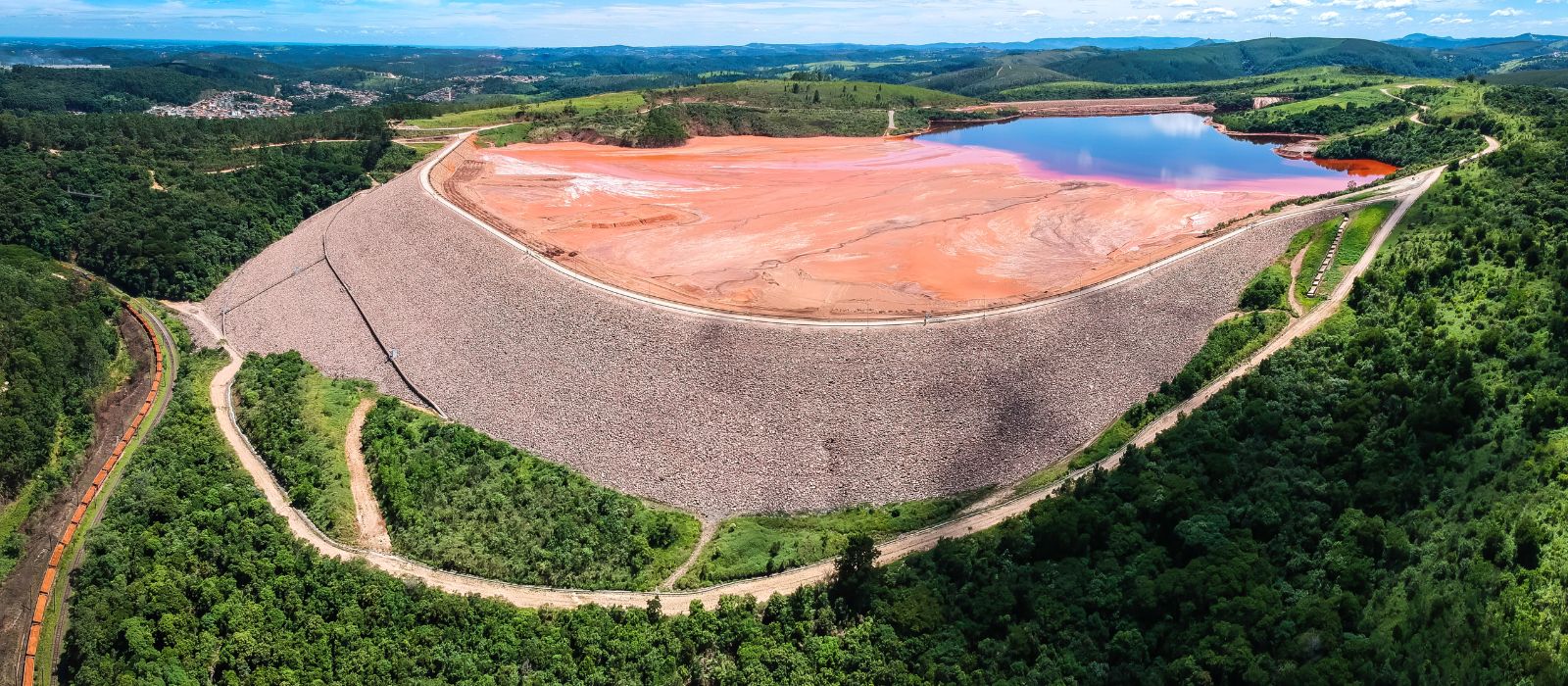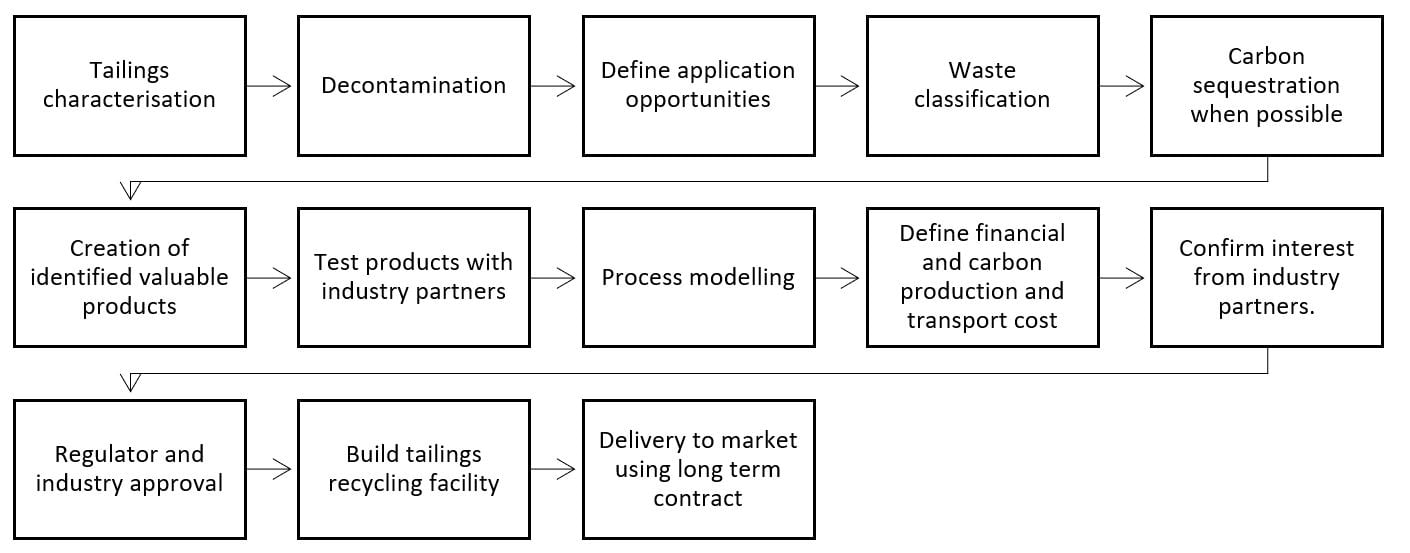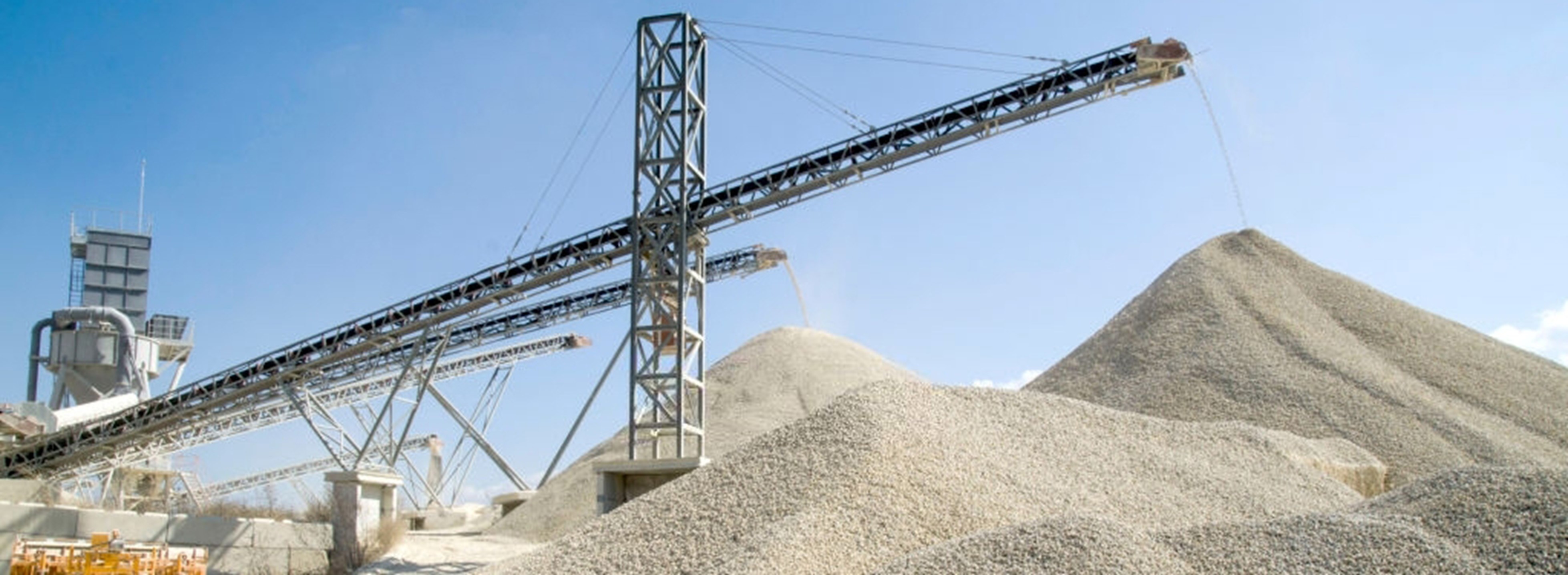Making repurposed mine waste a reality

With global mine waste increasing and ongoing risks associated with tailings dams, there is an opportunity for our industry to recycle waste materials into commercial and valuable products for other industries such as concrete, fertiliser, soil and aggregates, and reduce our carbon footprint.
There has been a significant increase in the volume of mine waste globally. This will have a negative impact on the environment over the next decades, and requires an urgent need for major change. Frequent tailings dam failures also can have severe consequences in the long term, forcing the mining industry to commit to developing alternative solutions for storing waste. Finding innovative solutions to these challenges will likely require collaborating with other industries and research organisations, both locally and globally. In this article, we discuss the need to reset current practice and make a significant leap to a more effective and sustainable way of dealing with tailings waste.
The current state of play
Mining plays a positive role in supporting our global society by providing the materials needed for technology, infrastructure and energy. However, overall mine waste is increasing at an annual rate of approximately 100 billion tonnes per annum. Of this amount, waste rock and tailings represents about 10 to 20 per cent (Vuillier et al, 2021).
The construction sector is also having a major impact on the environment, by requiring about 40 billion tonnes of aggregates and four billion tonnes of cement annually.
In the agriculture sector, approximately 100 billion tonnes of fertile soil is lost every year due to increasingly frequent short but intense damaging storm events caused by climate change (Vuillier et al, 2021). In addition, with intensive farming, soil often needs to be improved with mineral fertiliser. This causes long term damage to the underground water and often leads to biological dysfunction which can increase soil erosion. In some cases, the soil degradation is so advanced that the construction of a new fertile ‘technosoil’ is needed. Taking these factors into account, there is an opportunity for the mining industry to partner with the construction and agriculture sectors to supply aggregate and soils.
Embracing the circular economy
We have been developing solutions for the last four years to eliminate the need for tailings storage facilities in mining. The aim is to reduce the growing mass of waste in the global landscape, and minimise the associated negative risks to the community and environment. As a result, we have formed the Circular Mine Consortium. Our aim is to explore how the mining, construction and agriculture sectors can work together to create a sustainable circular economy model. The basic principle of the circular economy is that the waste of one industry becomes the resource of another one. This was successfully achieved in the city of Kalundborg in Denmark (https://www.symbiosis.dk/en/), which we identified as a good model to apply to mining.
One of our key findings is the need to collaborate at a global level due to the large size of the problem. We identified Europe as a global leader in circular economy principles due to their mining and industrial history, advanced technological development and high population density. Many European countries have experienced intense mining and industrial activity, which has resulted in serious environmental damages. Most of the European Geological Survey organisations have become experts in rehabilitating highly contaminated sites. Furthermore, Europe also has one of the most advanced carbon markets and is seen as a world-leader in this area.
However, Australia is a global mining leader with one of the most respected guidelines on tailings management published by ANCOLD (the Australian National Committee on Large Dams).
We have approached the French Geological Survey, locally and internationally known as BRGM (Bureau de Recherche Geologique et Miniere). They have been active in decontaminating former polluted mine and industrial sites for the last 50 years. They also have a unique expertise in technosoils, underground water management and bioleaching to recover metals from waste and urban mining.
Europe is also funding multiple initiatives to recycle industrial and mine waste. This includes the construction of a pilot plant which includes the decontamination of tailings, as well as carbon sequestration when possible. It also includes transforming tailings or other industrial waste into aggregates for construction materials and soils. Moreover, a European directive on soils is currently being drafted. Its aim will be to protect soils, stop their degradation and encourage their remediation.(See here: https://ec.europa.eu/environment/soil/index_en.htm). Our ongoing collaboration with BRGM has helped us approach other large corporations, including global producers of construction materials and agroforestry services, to explore circular economy solutions.
Making the ideas a reality
Our collaboration with many European and Australian organisations has led to a solution that can realistically remove a large part of waste rock and tailings from mining operations, and transform this into resources for the construction and agriculture sectors. This approach has many benefits such as decontamination, carbon sequestration and the removal of past, current and future tailings dams. This can significantly improve local conditions by creating a recycling plant and carefully selecting agriculture that is adapted to the local conditions.
Figure 1 shows a simplified example of a recycling process connected to the market.

In highly remote areas, it’s still possible to decontaminate, remove any valuable metals, sequestrate carbon and use a backfill for underground mining, abandoned pits and haul road construction. As a result, local farming can be adapted to the local climate conditions and to the fertility potential of the created technosoil.
The cost of transport has been highlighted as a potential serious roadblock in current market conditions. However, this can change and what is not economical today may become possible in the future. This change could be due to developing better infrastructure, lowering the cost of producing aggregates, or a greater need to replace fertile soil that has been washed away. Soon, certain countries will put a ban on fossil fuels or apply heavy carbon taxes on imported goods using fossil fuels, which will increase the price. This could help ensure that accessing resources in remote areas would be economically viable. This includes the possibility of increasing urban mining, reducing the need for more greenfield mine sites.
We see novel solutions emerging almost daily from all over the world. I recently read an article about an African engineer who has developed a type of concrete without cement, which can be used for non-structural elements. The technology readiness level (TRL) of many solutions is ranging from six to nine (for more information on TRL, see this document from the Australian Renewable Energy Agency). With current technology, it is possible to reduce the enormous volume of waste.
If we include the following costs of a tailings dam throughout its life cycle, the total cost of recycling can be easily justified and offset by significant savings:
- closure and rehabilitation cost
- unplanned life extension
- costs for regular malfunction
- risk of a potential failure during operation and after closure
- financial difficulty of the mine
- potential catastrophic loss of life, reconstruction, cleaning the environment, loss of production, brand damages, and closure costs.
What is clear is that recycling waste is already a solution that is partially applied under certain conditions. However, as mentioned before, we already have the technology available to repurpose and to even completely remove tailings dams. Alternatively, we can reduce the size of tailings dams to a more acceptable and safe level, or a low consequence category if there is a spillage and embankment failure.
This may not be applicable in some cases. However, it should systematically be considered at all stages of the mining cycle, including closure. It’s important to break the long cycle we have historically of disposing mine waste in the environment, without considering that it could be highly valuable for another industry.

Acknowledgements
The authors wish to thank the BRGM (Bureau de Recherche Geologique et Miniere) for their support.
References
Vuillier et al, 2021. ‘The Future of Mining with Zero Mine Waste’. The Southern African Institute of Mining and Metallurgy (SAIMM), Global tailings Standards and Opportunities for the Mine of the Future, Rustenburg, South Africa.
Kalundborg Symbiosis: six decades of a circular approach to production [online]. Available from: https://circulareconomy.europa.eu/platform/en/good-practices/kalundborg-symbiosis-six-decades-circular-approach-production
Kalundborg Symbioisis [online]. Available from: http://www.symbiosis.dk/en/